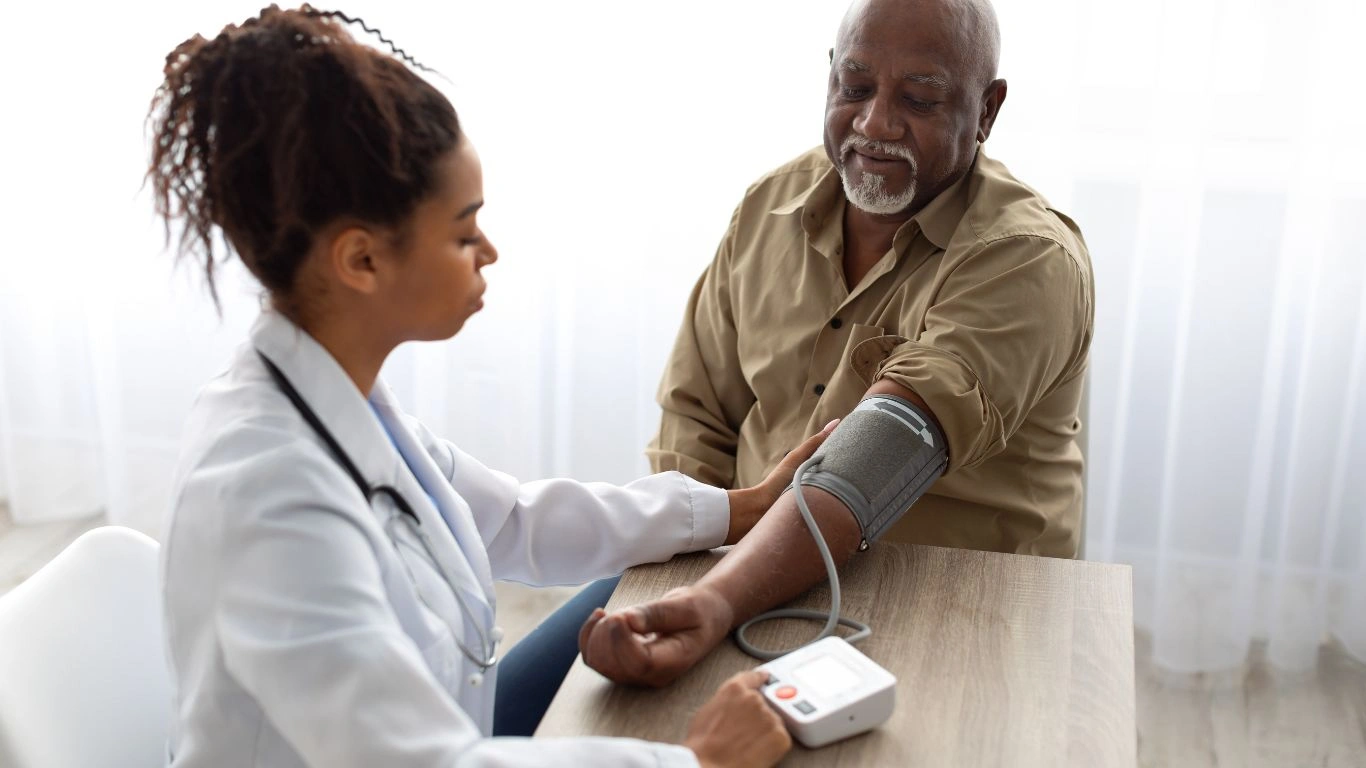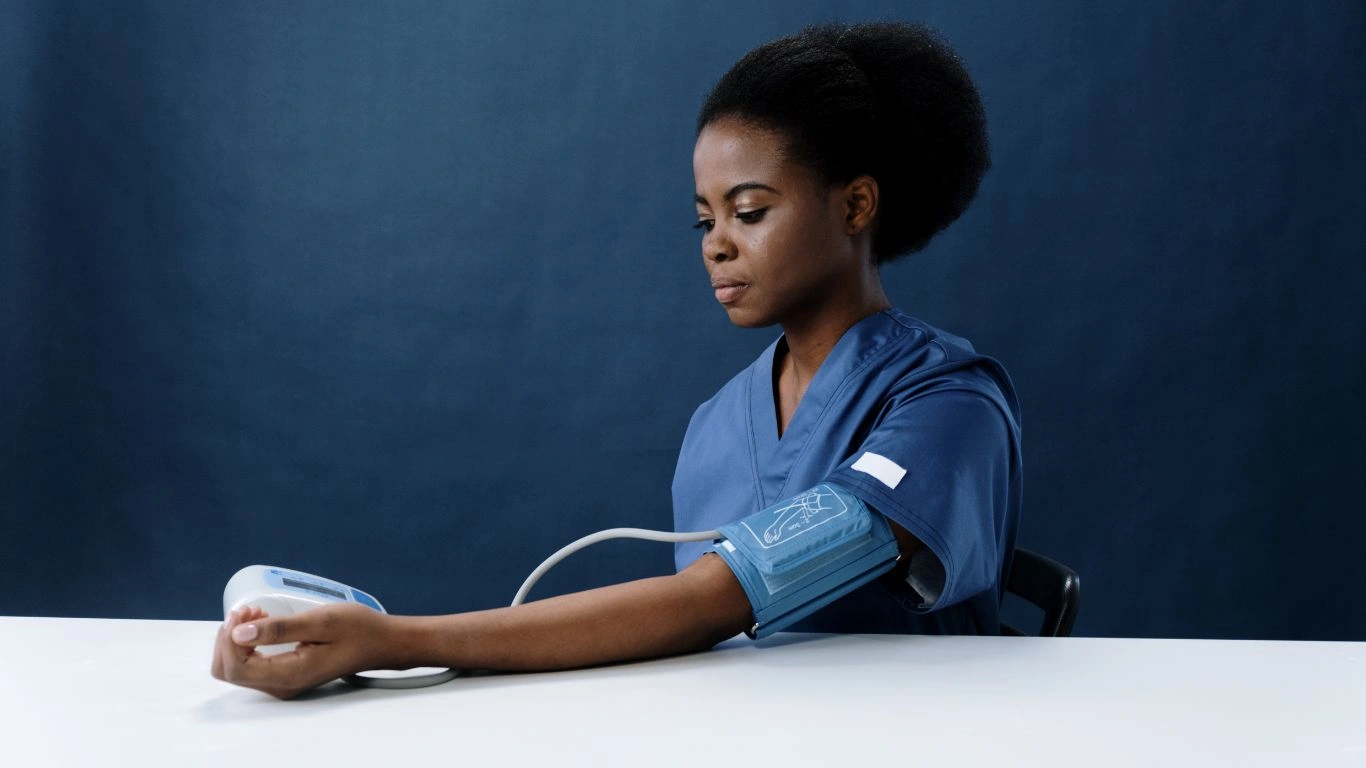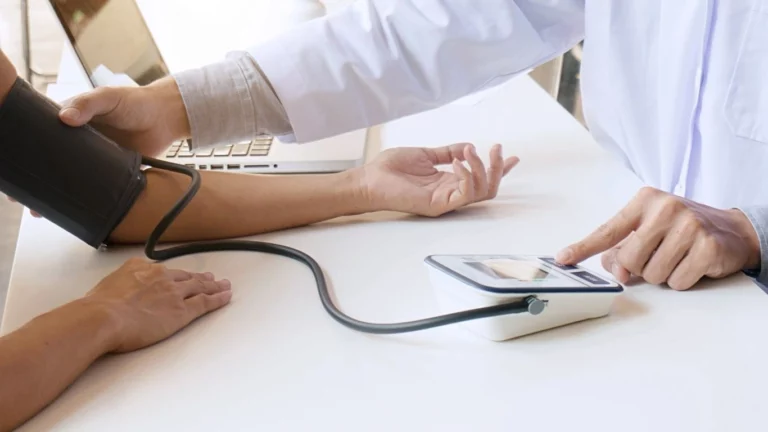Struggling with BP Symptoms at High Altitudes? Here’s Help
Ever wondered why your blood pressure acts weird when you’re hiking up in the mountains or spending a week at a ski resort? I’ve had patients tell me they feel completely off—lightheaded, pulsing headaches, or like their heart’s racing out of the blue. BP symptoms at high altitudes are more common than most folks realize, and as an internal medicine physician with a focus on hypertension management, I’ve seen this pattern time and time again. It’s not just the thinner air messing with your breath; it could be your blood pressure trying to keep up.
How Altitude Affects Blood Pressure

High altitude means lower oxygen levels. When your body senses that, it goes into a kind of overdrive, triggering a chain reaction that can elevate your blood pressure. This is a normal, short-term physiological response, but for folks with existing hypertension—or even borderline BP—it can get tricky.
I remember hiking with my husband in Colorado—he’s got well-controlled hypertension, nothing dramatic—but halfway through the first day he was dizzy, his temples were pounding, and his BP shot up to 160s. That wasn’t altitude sickness. That was his cardiovascular system flipping out over the sudden drop in oxygen.
Why the Body Reacts This Way
At high altitudes, the body compensates for reduced oxygen by:
- Increasing heart rate
- Constricting blood vessels (especially in the lungs)
- Stimulating adrenaline release
All these responses push your BP up. For healthy folks, it’s usually manageable. But if you’re someone who’s already on a calcium channel blocker or ACE inhibitor, this sudden shift can create symptoms that mimic other issues.
Common BP Symptoms at High Altitudes You Shouldn’t Ignore

One of the most common mistakes people make is brushing off symptoms like fatigue or headaches as “just altitude.” While that’s partly true, there’s often a blood pressure component involved. Here’s what I typically look for in my patients who travel or live at elevation:
- Pounding headaches: Often felt behind the eyes or at the temples. Can worsen with activity.
- Dizziness or lightheadedness: Especially when getting up quickly or climbing stairs.
- Palpitations: Feeling your heart thumping or racing without exertion.
- Chest tightness: Can feel like anxiety but may be vascular tension.
- Shortness of breath: Beyond what’s normal for exertion at altitude.
From a clinical standpoint, these symptoms are red flags—especially if they appear within 24–48 hours of reaching a higher elevation. It’s not always a hypertensive emergency, but it might call for medication adjustment, added fluids, or supplemental oxygen. I’ve adjusted meds for patients via telehealth who were vacationing in Aspen and experiencing off-the-chart readings.
Altitude and Blood Pressure Meds: A Delicate Balance

Here’s the tricky part: some BP meds don’t play nice with altitude. Diuretics, for example, can worsen dehydration, which is already a risk up there. Beta blockers may blunt the heart’s natural response to exertion, making you feel more wiped out than necessary.
A few tips I usually share with patients heading to high altitudes:
- Hydrate aggressively—altitude is dehydrating and dehydration spikes BP.
- Monitor BP twice daily—especially if you’re on meds.
- Ease into activity—don’t go skiing 6 hours after landing in Denver.
- Bring extra meds—and a plan in case your pressure goes up.
Honestly, I can’t count how many people think they’re just “out of shape” when it’s really their antihypertensive regimen needing a tweak at 8,000 feet. It’s one of those situations where a little prep makes a big difference.
What Happens If You Ignore BP Symptoms at High Altitudes?

Let me be blunt—ignoring BP symptoms at high altitudes can land you in trouble. I had a patient, super healthy guy in his early 50s, took his meds like clockwork. He went to Peru for a hiking trip and figured, “Eh, I’ll be fine.” By day three, he was flat on his back with a splitting headache, sky-high pressure, and had to be evacuated. Turns out his BP spiked above 180 systolic, triggering hypertensive urgency. No stroke, thankfully—but it was a close call.
Most folks don’t realize that your heart and vessels are already working harder in thin air. Add unregulated blood pressure to the mix, and it’s like flooring a car uphill with low oil—things can go south fast.
Risks of Letting It Slide
Here are a few complications I worry about when someone brushes off high-altitude BP symptoms:
- Acute mountain sickness (AMS): Can be worsened by elevated BP, and vice versa.
- Hypertensive crisis: Sudden, severe rise in BP—can damage kidneys, heart, eyes, or brain.
- Arrhythmias: Irregular heartbeat due to stress on the cardiovascular system.
- Pulmonary edema: Fluid accumulation in the lungs, often confused with altitude sickness.
The takeaway? Don’t just chalk it up to altitude. Pay attention. Your body’s trying to tell you something.
Who’s Most at Risk for BP Spikes at Elevation?

Not everyone’s equally sensitive to elevation changes. Based on what I’ve seen in my practice (and a few personal hikes gone sideways), certain folks are more prone to these BP swings:
- People over 50: Especially if there’s already a history of hypertension or cardiovascular disease.
- Anyone with poorly controlled or labile BP: If your numbers bounce around at sea level, altitude won’t help.
- Patients on diuretics: These meds increase fluid loss, and altitude dehydrates you further.
- Folks living at sea level long-term: Your body’s not adapted to thinner air, so the shock is greater.
- People with kidney disease: Altitude can exacerbate renal strain, indirectly pushing BP higher.
I’ve had a few marathon runners from Houston who thought they were in peak shape until they landed in Telluride. Their hearts said “nope,” and their systolic BP jumped by 20–30 points. Fitness doesn’t always shield you from altitude-related pressure changes.
BP Monitoring Tips for Travelers Going High

When I know my patients are headed to high places—whether it’s a vacation or moving to Denver—I give them a little pre-trip checklist. Here’s what I recommend to keep blood pressure in check while you’re high up:
- Pack a portable BP monitor: I like the wrist ones for ease, but upper arm is more accurate. Make sure it’s calibrated.
- Track trends, not just one reading: I tell patients to check AM and PM for the first few days.
- Don’t adjust meds without talking to your doc: I’ve had people cut their beta blocker in half without telling me. Don’t.
- Note how you feel, not just numbers: A BP of 145 might be okay for you at sea level—but if you feel awful at 145 in altitude, that matters.
- Stay warm and hydrated: Cold temps and dehydration both push BP up further.
Also, don’t forget about altitude effects lingering even after you descend. It can take a couple of days for your system to reset. So if your BP seems “off” after getting home, give it a few days before panicking—or reach out to your provider for a quick consult.
Should You Pre-Treat Before Heading Up?
Great question—and one I get a lot. The answer? It depends. For patients with severe hypertension or cardiovascular history, I sometimes adjust meds preemptively, especially if they’re flying straight into high elevations without time to acclimate.
But for most people, I advise:
- Give your body a day or two to adjust naturally before changing anything.
- Limit alcohol and caffeine early on—they’re both dehydrating and can skew BP readings.
- Check your BP proactively, but don’t obsess over every single number.
The human body’s incredibly adaptable, but you’ve got to listen to it. I always say, your blood pressure is like a car engine warning light—ignore it too long, and you’re stuck on the side of the road halfway up a mountain.
When to Seek Medical Help — Don’t Wait Too Long

So, what’s the line between manageable symptoms and a full-on medical issue? As someone who’s treated everything from mild BP spikes to hypertensive emergencies in both clinic and hospital settings, I always tell patients: trust your instincts, but don’t delay action.
Here are some situations where you really shouldn’t “wait and see”:
- BP above 180/120 with symptoms: That’s already in hypertensive crisis territory. Add a headache, vision changes, or chest pain—and it’s a red flag.
- Unrelenting headache or chest tightness: Even if your BP isn’t sky-high, persistent symptoms need evaluation.
- Neurological changes: Slurred speech, facial droop, confusion, or weakness—altitude or not, these could mean stroke.
- Shortness of breath that worsens: Especially at rest or during sleep, could indicate high-altitude pulmonary edema (HAPE).
If you’re traveling and start to notice these, get to the nearest clinic or ER. I always remind my patients: it’s better to be the “false alarm” than the one who waited too long.
Smart Travel Planning for Hypertensive Patients

If you’ve got hypertension and you’re dreaming of mountain trails, Machu Picchu, or even just a cabin getaway in the Rockies, good news—you don’t have to cancel your plans. You just have to plan smarter.
Here’s how I help my patients prepare:
- Schedule a pre-travel check-in: I usually review meds, refill prescriptions, and talk through worst-case scenarios—just to be safe.
- Acclimatize gradually: If possible, spend a day or two at intermediate elevation before going all the way up. It really helps your body adjust.
- Know the nearest care facility: Google clinics or hospitals near your destination and save contact info. Just in case.
- Travel with your medical summary: Include a list of your meds, your usual BP range, allergies, and emergency contact. A printed copy can be a lifesaver if you lose cell signal.
- Use apps for logging BP: Apps like Omron or Qardio can sync your monitor with your phone and even send logs to your doctor.
And if you’re a caregiver or traveling with someone older with hypertension, check in frequently. I once had a patient whose daughter noticed he was quieter than usual on day two in Breckenridge. Turned out his BP was in the 190s and he hadn’t been hydrating. Her quick thinking probably prevented a hospital trip.
What to Expect as Your Body Adjusts
Now here’s the encouraging part: most people do adjust! If your symptoms are mild—maybe a slightly elevated systolic number, light headache, or minor fatigue—you’ll likely stabilize within a few days.
Your body starts to:
- Produce more red blood cells to carry oxygen more efficiently
- Adapt blood vessel tone to manage pressure better
- Adjust breathing patterns to improve oxygen intake
That said, I still recommend checking your BP daily for at least the first 4–5 days at elevation, and continuing once every few days after that if you’re staying longer. You don’t have to obsess, just stay aware.
One of my patients who relocated to Santa Fe actually ended up reducing his medication dose—after we carefully monitored his numbers and symptoms. The point is, changes happen in both directions. Always coordinate with your provider before making adjustments.
References
Disclaimer
This article is intended for informational purposes only and should not be taken as medical advice. Always consult with your physician or a qualified healthcare provider before making changes to your medication or health routine—especially when traveling to high altitudes. As an Internal Medicine Physician, I base these insights on years of clinical practice and patient experience, but individual health situations vary.

Dr. Gwenna Aazee is a board-certified Internal Medicine Physician with a special focus on hypertension management, chronic disease prevention, and patient education. With years of experience in both clinical practice and medical writing, she’s passionate about turning evidence-based medicine into accessible, actionable advice. Through her work at Healthusias.com, Dr. Aazee empowers readers to take charge of their health with confidence and clarity. Off the clock, she enjoys deep dives into nutrition research, long walks with her rescue pup, and simplifying medical jargon one article at a time.





